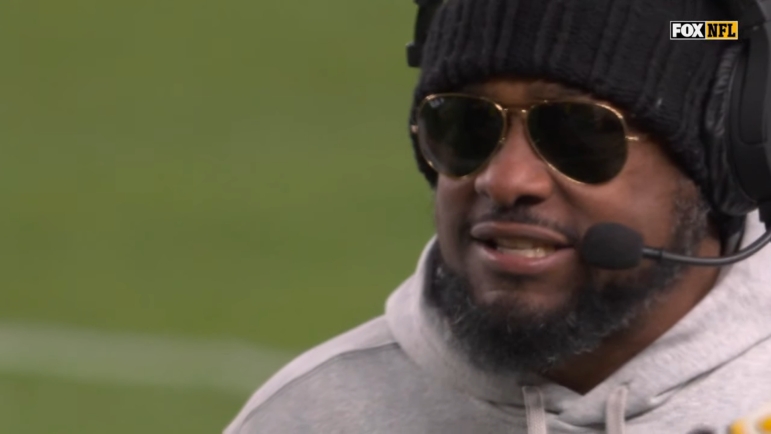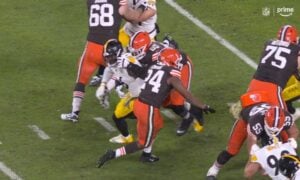Clock management can be the difference between an opportunity to score a touchdown or settling for a field goal. That exact situation played out Sunday at the end of the first half for the Pittsburgh Steelers.
T.J. Watt had just notched his second sack in the span of just a few plays to kill the Philadelphia Eagles’ drive. Instead of calling an immediate timeout on 4th and 24, Mike Tomlin inexplicably let over 20 seconds pass by before stopping the clock.
He was asked about this decision and what happened during his press conference after the Steelers’ 27-13 loss.
“I got caught up in some information, and I’ll just leave it at that,” Tomlin said via the Steelers’ YouTube channel.
Here is the play with Hurts hitting the ground with about 1:54 remaining on the clock.
An immediate timeout would’ve given the Steelers about 1:42 and a timeout to let their offense go to work after the punt. Instead, they got the ball with 1:17 remaining and that lone timeout. Those 25 seconds could have made a big difference on the Steelers’ final drive of the half.
They had the benefit of P Braden Mann shanking the punt for just 29 yards, but Tomlin obviously didn’t know that was going to happen. They were able to get a field goal because of the shanked punt, but Tomlin’s mistake could have cost them the opportunity to even get three points had the punt gone for an average distance.
You can’t say with certainty that the Steelers would have scored a touchdown had Tomlin managed the clock better, but it definitely hurt their chances. When you only have 1:17 and one timeout, the available plays that OC Arthur Smith can call is pretty narrow. The middle of the field is difficult to use, and that makes it easier for the Eagles to defend as well.
Russell Wilson ended up getting sacked for a loss of 10 yards on a third down, so chances are they wouldn’t have ended up scoring a touchdown anyway, but the coach’s job is to put his team in the best possible position to make plays. In this case, Tomlin didn’t do that with poor clock management.
What was the information that Tomlin got “caught up” in? Your guess is as good as mine. In the past, Tomlin had Teryl Austin, then a defensive assistant, up in the booth to assist with challenging plays, clock management and other in-game decisions. It’s possible there was a conversation going on in the headset, though I’m not sure what could possibly be said to hold up the decision-making process in this case.
Had the Steelers scored a touchdown, they would have entered halftime tied with the Eagles at 17-17. The second half wasn’t kind to the Steelers, so this can’t be blamed on the loss in any way, but it was a puzzling Tomlin error when the Steelers were starting to build momentum.








